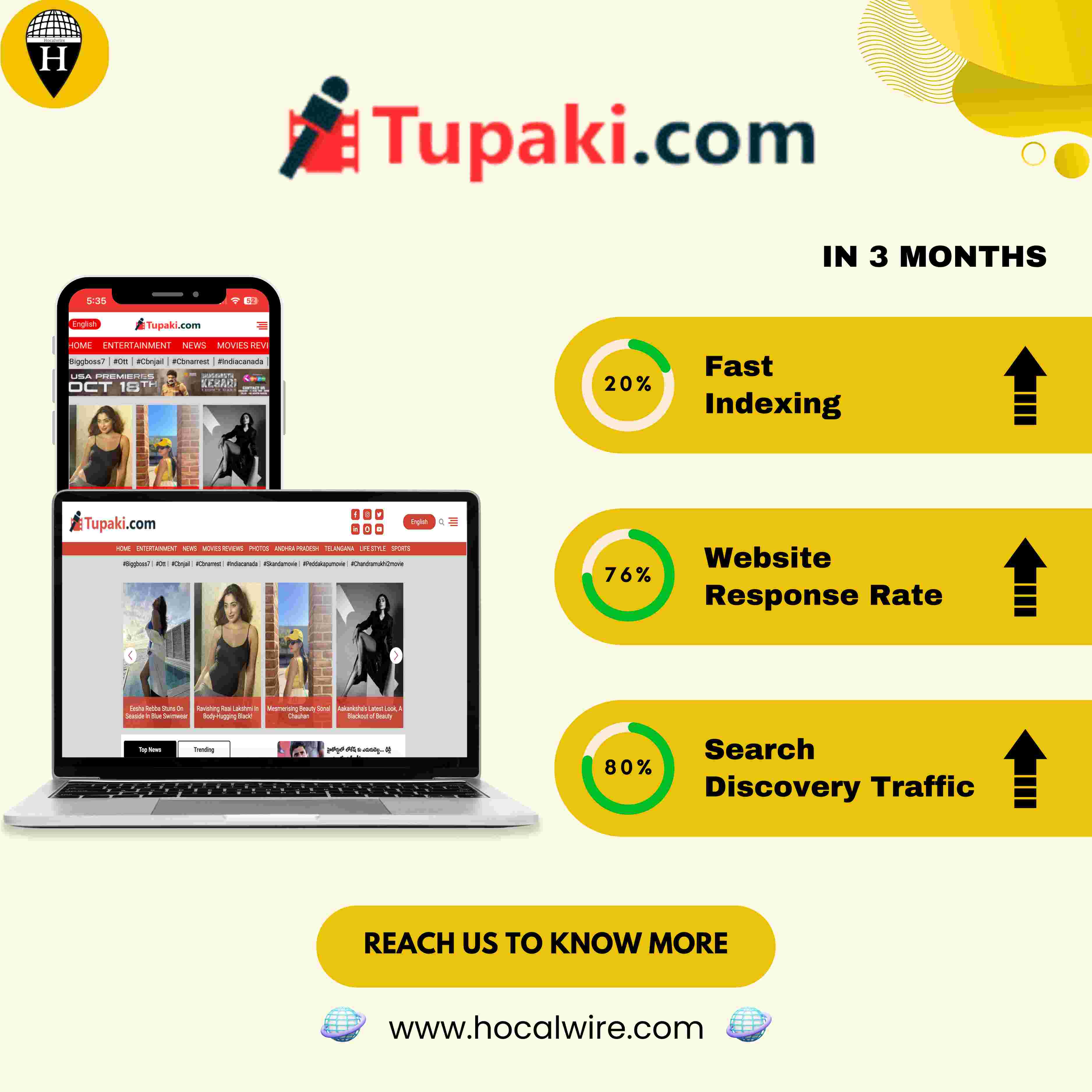



Tupaki Media Portal: Converting Its Outdated Architecture Into a Single, Flexible, and Profitable Platform
Facing challenges with an outdated architecture, separate websites, and standard designs, Tupaki sought to reinvent itself.
Introduction
In an era where digital media and entertainment are thriving, Tupaki Media Portal, a prominent bilingual Telugu and English news and entertainment platform embarked on a journey to revamp its digital presence. Facing challenges with an outdated architecture, separate websites, and standard designs, Tupaki sought to reinvent itself to enhance user engagement, reach, and revenue generation. This case study delves into Hocalwire's approach to transforming the Tupaki Media Portal into a responsive, unified, and monetizable platform, along with the impact and benefits achieved.
Client Background
Tupaki Media Portal has been a renowned source for news, cinema, and entertainment content in both Telugu and English languages. With a dedicated audience and a strong presence in the digital media landscape, Tupaki aimed to stay ahead of the curve by modernizing its digital infrastructure.
Problem Statement
Tupaki Media Portal faced several challenges
- Outdated architecture.
- Standardized designs that limited customization.
- Limited control over audience engagement.
- Irregular publishing due to lack of tech support.
Objectives
Hocalwire's objectives for the Tupaki Media Portal included
- Transitioning to responsive designs.
- Unifying the platform for a consistent user experience.
- Customizing features and content, including movie reviews and entertainment coverage.
- Enhancing audience engagement and reach.
- Taking control of their audience and monetization.
Our Approach
Hocalwire embarked on a comprehensive approach that spanned over two years and involved three revisioned designs. Key elements of our approach included
- Responsive Designs: Migrating from an outdated architecture to responsive designs to ensure seamless user experiences on both desktop and mobile devices.
- SEO Optimization: Implementing SEO best practices to improve search engine rankings and discoverability, catering to both SEO and mobile audiences.
- Ads Management: Transitioning from external ads management to an in-house solution to enable effective monetization.
- Self-Service Features: Empowering Tupaki with self-service features to gain control over their content and audience engagement.
Execution and Implementation
The execution and implementation phase involved meticulous planning and attention to detail. Hocalwire invested more than two to three years in designing, customizing, and migrating the Tupaki Media Portal. This process included extensive customization of the website schema and other components to meet Tupaki's unique requirements.
Lessons Learned
Throughout the project, Hocalwire learned valuable lessons about the importance of flexibility, continuous adaptation, and aligning digital strategies with business objectives. These lessons have shaped our approach to future projects.
Results
- 20% Fast Indexing: Tupaki Media Portal experienced a 20% increase in indexing speed, ensuring their content reached audiences faster than ever before.
- Search Discover Traffic: Witnessed an extraordinary 80% growth in traffic to high-quality URLs, indicating improved content relevance and discoverability.
- 80% Increase in Website Response Rate: The website's response rate surged by 80%, providing users with a seamless and swift browsing experience.
Key Takeaways
- Digital transformation is an ongoing process that requires adaptability.
- Customization is key to meeting unique business needs.
- A responsive design is essential for a modern online presence.
Client Testimonial
Conclusion
The partnership between Tupaki Media Portal and Hocalwire resulted in a successful transformation. Tupaki now boasts a unified, responsive, and monetizable platform that has significantly increased its audience reach and engagement. This case study underscores the importance of embracing change and leveraging digital capabilities to stay competitive in the ever-evolving media landscape.


